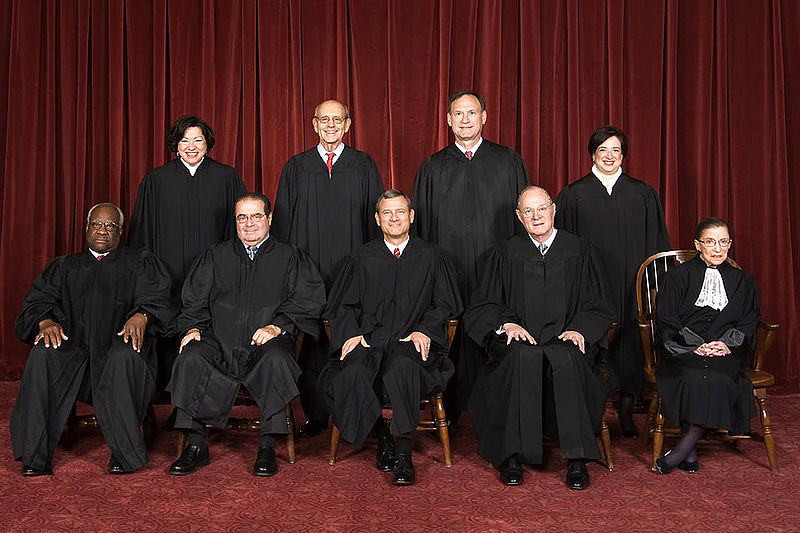Abortion absolutists have wasted no time popping the champagne corks in response to this morning’s horrendous Supreme Court ruling against Texas’s right to regulate abortion facilities in the interest of women’s health and safety.
Jezebel’s Stassa Edwards, for instance, reacted by declaring, “Thank f***ing god.” You know, to beat back those vicious, unfair stereotypes about pro-aborts being crass juveniles who don’t appreciate the life-or-death stakes of their issue.
The rest of her piece is a by-the-numbers recitation of the usual litany of discredited pro-abortion talking points against HB 2, of which one stands out:
[M]ost major medical groups agree that the TRAP bill endangers women’s healthcare by either delaying or outright blocking the procedure. This is evidenced, perhaps, by the fact that, in Texas, DIY abortion is on the rise.
The source for that claim is, naturally, the infamous Texas Policy Evaluation Project study on self-abortion attempts which Live Action and others debunked more than seven months ago.
And if we turn the clock back to before abortion-industry sympathizers had a partisan incentive to oppose admitting privileges, many of those same major medical groups, including the American College of Obstetricians and Gynecologists, American Medical Associations, and thirty others agreed they were a valid and important standard for anything falling under the umbrella of office-based outpatient surgical care. (Oh, and even the National Abortion Federation endorsed admitting privileges… sixteen years ago.)
Mother Jones’ contribution to the festivities is to present the “best lines” from the ruling:
STEPHEN BREYER: We have found nothing in Texas’ record evidence that shows that, compared to prior law…the new law advanced Texas’ legitimate interest in protecting women’s health.
BREYER: More fundamentally, in the face of no threat to women’s health, Texas seeks to force women to travel long distances to get abortions in crammed-to-capacity superfacilities. Patients seeking these services are less likely to get the kind of individualized attention, serious conversation, and emotional support that doctors at less taxed facilities may have offered.
RUTH BADER GINSBURG: It is beyond rational belief that H. B. 2 could genuinely protect the health of women, and certain that the law “would simply make it more difficult for them to obtain abortions.”
GINSBURG: When a State severely limits access to safe and legal procedures, women in desperate circumstances may resort to unlicensed rogue practitioners, faute de mieux, at great risk to their health and safety.
If these are the best, then that alone proves the case was wrongly decided. First, how could the Justices find no evidence when the evidence includes the aforementioned conclusion of 32 authoritative medical organizations, women who’ve been injured or killed by botched abortions, and the plaintiff organization’s own record of failure to have:
- licensed nursing staff on-site,
- improper disposal of private patient information,
- poorly maintained medical equipment including “numerous rusty spots” on a suction machine,
- “infection control issues” stemming from not properly sterilizing surgical instruments,
- unsanitary equipment,
- expired medications,
- improperly labeled medications,
- improper medical waste disposal,
- violation of informed-consent laws,
- lack of usable EKG machines and deliberators,
- and more?
Second, medical standards do not force abortion facilities to close; aside from the declining market for abortions, facilities are choosing not to invest in the reforms necessary to comply. Amid 20,000 comments about HB 2, the Texas Department of State Health Services found no “basis to believe that abortion providers would be unable to make similar adjustments” than made by abortionists who complained yet “nonetheless received admitting privileges and either stayed open or reopened.”
Third, it wasn’t the Justices’ place to even get into either of those areas in the first place. Their only job was to determine whether the Constitution prohibits Texas from making this law. Whether the law is a good idea was a policy judgment reserved to the people through their elected branches of government—not for the unelected branch to usurp through the “compelling interest” or “undue burden” test, and certainly not through blind deference to an illegitimate precedent such as Roe v. Wade.
Finally, at Salon the truth-allergic Amanda Marcotte hailed the victory for “further shredding the religious right,” claiming that HB 2 can’t have been meant to improve safety, based on the novel reasoning—are you sitting down?—that safer abortions would be “pretty much impossible, as abortion is already safer than dental surgery or a colonoscopy.”
Two things, Amanda: first, we don’t really know if abortion is safer (for mothers, that is; it’s deadly to children) because abortion underreporting is a serious hindrance; in particular, we know abortion-related deaths get wrongly classified as just “pregnancy-related.” Second, we’re not even talking about the average abortionist; we’re talking about the facilities who, as explained above, commit dozens of acts of medical negligence, yet get people like you to run interference for them.
Of course, Marcotte has no problem going from that deceit to sneering about the “incredible bad faith of the regulations.” Glass houses, Amanda…
And this Supreme Court decision is making it harder than ever for the right to cling to religion as the pretense for the politics of resentment.
Inasmuch as no religious claims were at issue on either side of this lawsuit and nothing pro-lifers argued was false (making “bearing false witness” claims a dead-end), it’s hard to see how Marcotte’s conclusion follows, other than as a manifestation of her persistent psychological need to erect comforting fantasies about her foes’ motives.
As an antidote to all the above nonsense and deceit, I leave you with the following beacon of sanity from Justice Clarence Thomas’s dissenting opinion:
Today’s decision creates an abortion exception to ordinary rules of res judicata, ignores compelling evidence that Texas’ law imposes no unconstitutional burden, and disregards basic principles of the severability doctrine. I write separately to emphasize how today’s decision perpetuates the Court’s habit of applying different rules to different constitutional rights— especially the putative right to abortion […]
A plaintiff either possesses the constitutional right he is asserting, or not—and if not, the judiciary has no business creating ad hoc exceptions so that others can assert rights that seem especially important to vindicate. A law either infringes a constitutional right, or not; there is no room for the judiciary to invent tolerable degrees of encroachment. Unless the Court abides by one set of rules to adjudicate constitutional rights, it will continue reducing constitutional law to policy-driven value judgements until the last threads of its legitimacy disappear.








